I Refused to Pay for the Coffee Machine at Work—Now HR Got Involved

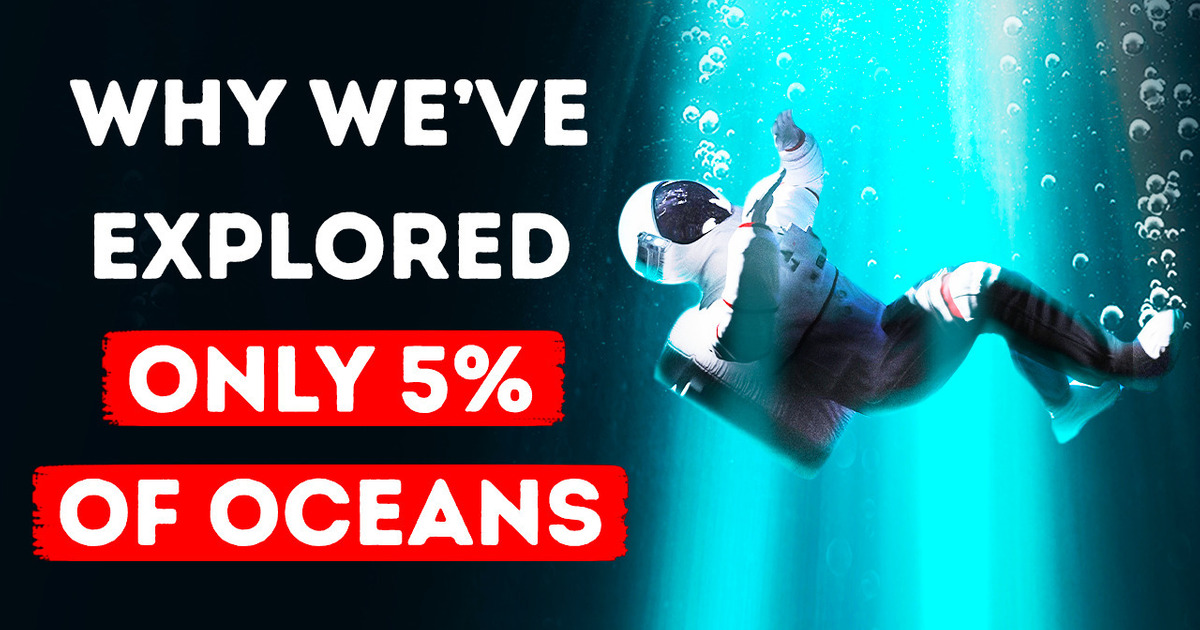
Oceans cover over 70% of the Earth’s surface, so it comes as no surprise that about 50% of the U.S. territory is underwater. We’ve explored only 5% of oceans. 12 people walked on the Moon, but there were only four manned descents to the Mariana Trench, the deepest location on Earth. Pressure is the crucial challenge of going deep into the ocean. At bigger depths, temperatures are extremely low, visibility is zero, and the pressure is so intense it’s harder to send people to the bottom of the ocean than to send them into space.
You can’t see it, but the pressure of the air pushing down on your body in deeper parts is so big it feels like more than one hundred adult elephants or 50 jumbo jets are standing on your head. The pressure is 1,000 times bigger than on the land. Meanwhile, in space, when we pass through the Earth’s atmosphere, the pressure drops to zero. We’re mapping the planets, but it turns out to be easier than mapping the ocean floor. NASA uses radio waves when exploring space, but this method can’t be used for the ocean, since the trillions and trillions of gallons of water get in the way.
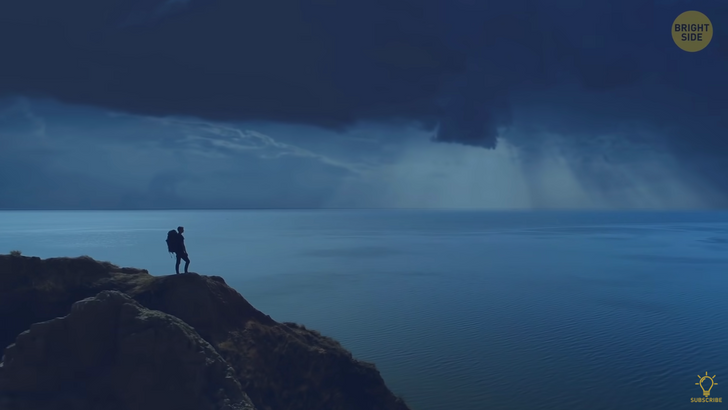
The Pacific Ocean is becoming smaller, while the Atlantic Ocean is expanding. Many, many years ago, the Atlantic Ocean wasn’t even there. It was formed when the North and South American continents separated.
Now, it’s growing bigger at a rate of 2 inches per year, while the Pacific Ocean is shrinking a bit. Oceans even have their own sound called a bloop. Its quite loud, low-frequency, and pretty spooky sound was detected by scientists back in 1997. Some years later, though, other studies revealed that the bloop emanated from an iceberg, cracking away from a glacier.
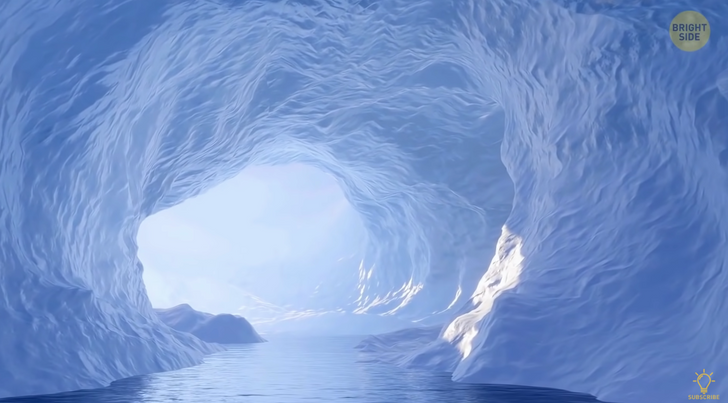
There are lakes and rivers in the ocean depths. It’s possible because saltwater and hydrogen sulfide make a combination that’s much denser than the water surrounding it, which is why lakes and rivers might form and flow right inside the ocean.
The world’s biggest waterfall called The Denmark Strait cataract is underwater, too, in the waters between Iceland and Greenland. It’s 11,500 feet tall 11,500 feet [(3,500 m)], and its amount of water is almost 2,000 times bigger than the one Niagara Falls has. This underwater waterfall is possible because cold water is much denser than hot water, so cold water drops into the much warmer Irminger Sea.
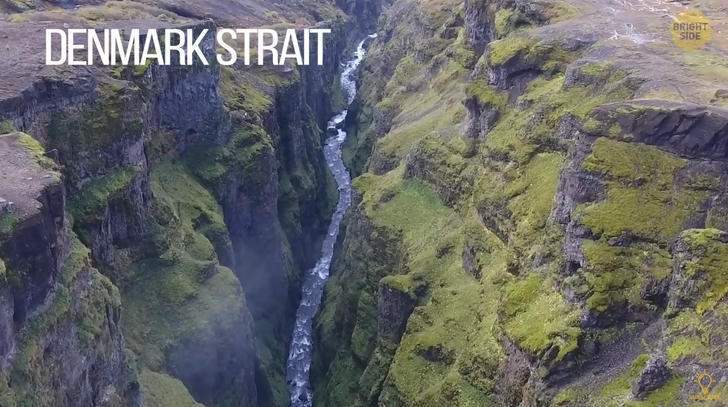
The longest mountain chain is also hidden in the mysterious underwater world. The Mid-Ocean Ridge is almost 40,000 miles long 40,000 miles [(65,000 km)]. People studied only about 1% of this ridge. We know less of this chain than we know about the surface of Mars or Venus.
Challenger Deep, the southern part of the Mariana Trench. That’s a small valley at an extreme depth of a little bit over 36,000 feet [(11,000 m)]. Imagine putting our tallest mountain, Mt Everest, into the Challenger Deep. 1.2 miles 1.2 miles [(2 km)] would still remain for the mountain’s peak to reach the surface of the water. 94% of living creatures are aquatic, and almost two-thirds of marine life is still not defined, so new species are being discovered all the time — including those spooky ones, like the goblin shark, the fangtooth, and the frilled shark. Imagine what more’s been waiting for us down there.
There are also treasures hidden down below. [20 MLN T OF GOLD] Oceans have around 20 million tons of gold, but not in a way it can be extracted or mined with any cost-effective methods. It’s dispersed all over the seafloor. [9 POUNDS (4.08 kg)] If we could take it out, each person on the planet would get about 9 pounds of gold.
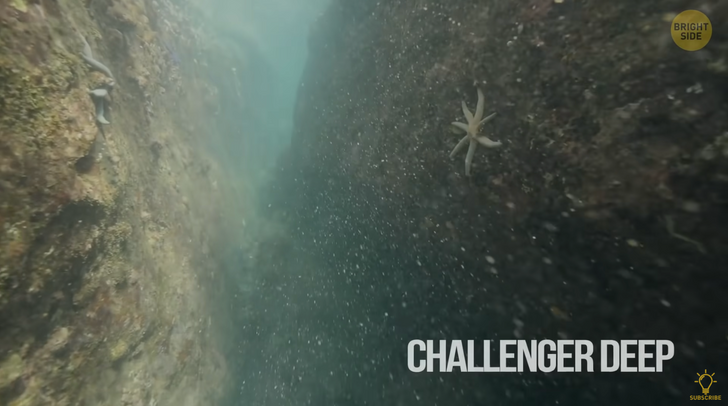
Corals in shallow waters needed to find a way to protect themselves from the sunlight. So, they developed some kind of layer that helps them feel good even when exposed to direct sun rays. Basically, they developed a sort of natural sunscreen. Corals are living creatures. No mouth, eyes, or anything else that could say they’re more than a rock, but they are in the category of marine invertebrates.
A lot of the oxygen on our planet comes from the ocean. Scientists claim it’s about 50-80%. The oxygen is produced by marine plants, mostly algae. A tsunami can be up to 100 feet tall 100 feet [(30 m)], but waves under the surface are even bigger and can reach a height of 800 feet 800 feet [(240 m)] before they collapse. Antarctic fish have proteins inside of their bodies that act as some sort of natural antifreeze; these proteins attach to ice crystals and prevent fish from freezing when the water gets too cold.
When you place a seashell near your ear, it seems like you hear the sound of waves crashing on some distant beach, like a shell’s memories’re trapped inside. In reality, the shell amplifies the ambient noise from your current surrounding. There are a million volcanoes in the ocean depths, and 80% of eruptions happen underwater. The Jellyfish is one of the oldest aquatic creatures and their ancestors lived 500-700 million years ago. That makes them more than twice as old as the first dinosaurs, since they appeared around 240 million years ago.

Sharks have also been around for quite a long time, about 400 million years. Fun fact: they don’t have bones, but cartilage — the same things our noses and ears are made of. Their skin is covered in a material that looks more like some sort of teeth than fish scales (dermal denticles). With this, their skin kinda feels like sandpaper, so it helps them be quicker and quieter. The smallest shark called a dwarf lantern shark is also one of the tiniest fish in the ocean since the biggest one ever found was smaller than 8 inches 8 inches [(20 cm)].
Lobsters have been around for almost 500 million years. Scientists found fossils of some kind of a huge 7 feet long [(2 m)] lobster, which was one of the biggest animals living at those times. Dolphins are some kind of sleepwalkers since they sleep with only half of their brain — they close one eye at a time. Sea turtles are quite adaptive animals, and they live on all the continents, except Antarctica.
Octopi are incredible marine dwellers. They have blue blood, 3 hearts, and 9 brains — the central one, and the other 8 brains are distributed among their 8 arms. They also can regrow an arm in about 100 days. Sea sponges don’t have a head, eyes, a mouth, bones, lungs, a heart, or a brain, but... They’re still living beings.
A seahorse is technically a fish, even though it doesn’t look like one. This specific animal has no stomach or teeth. Food goes through its digestive systems really fast, so these animals must eat more or less all the time to stay alive. Seahorses can eat more than 3,000 brine shrimp per day.
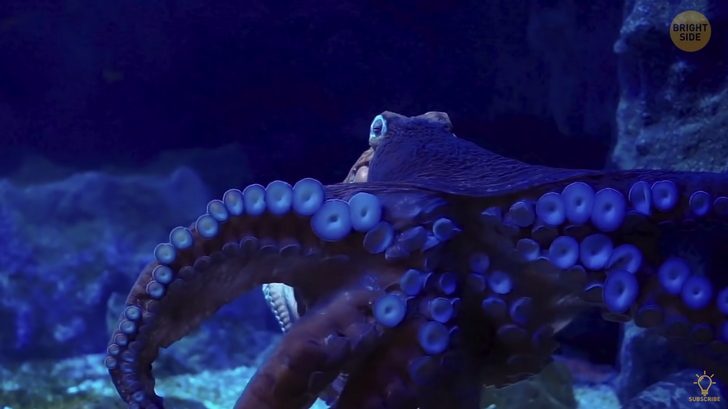
There’s a unique spot in the Pacific Ocean where you’re farther from all your problems than in any other place on Earth. It’s called “Point Nemo”, and it’s about 1,500 miles 1,500 miles [(2,400 km)] away from the closest points of land. It’s quite hard to get there: first, it’s not a bit of land, so you can’t actually see it. Second: even the person who discovered it back in 1992, never visited it!
The ocean doesn’t get struck by lightning as often as the land does, but when this happens, the results can be way worse than on the ground since water is conductive, so lightning spreads across the ocean really fast. Cold water surrounding your body while swimming may feel refreshing, but that’s not a protective layer, and you can still get sunburned. In fact, the water only reflects 10% of UV rays, while the sand reflects an additional 15% of the sun rays.
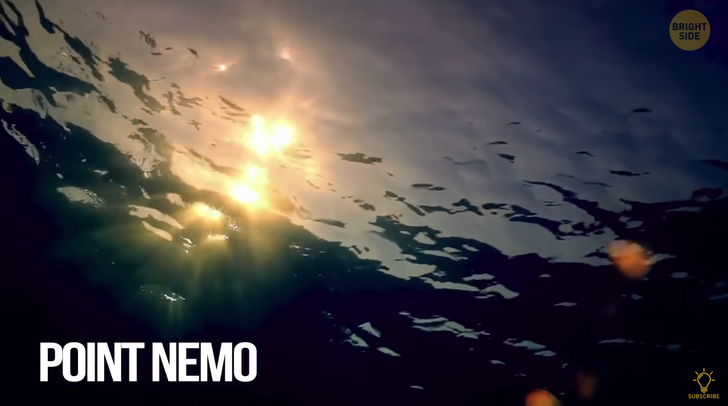
The temperature in oceans varies; sometimes you can find water with a temperature of up to 40 F [(4 °C)], while there are hydrothermal vents in the seafloor too. They release water that goes up to 750 F [(400 °C)]. There’s this thing called the milky sea phenomenon — a stunning scene where the water glows with such incredible light that looks like it’s not from our planet. This area is so big you can see it shining from space — and the mysterious phenomenon usually can be seen in the Indian Ocean.
Sometimes, while chilling on a beach, you can see green flashes over the horizon. That happens because the atmosphere bends sunlight when it’s passing through, after which it separates the light into different colors. This is in the same way a prism splits the light into what we later see as small rainbows!
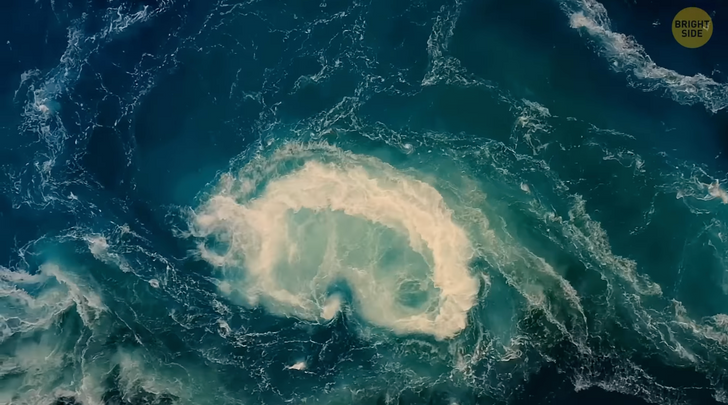
Black holes have incredibly strong gravitational force pulling objects in — even light doesn’t have a chance to escape it. A similar thing happens with those found in the oceans — yes, no need to go to space to see one of those, we have them on the Earth too.
It’s just that they don’t catch the light, but the water. They are enormous whirlpools sometimes bigger than whole cities, and they’re spinning against the main current, swirling billions of tons of water — and everything else on the way...











